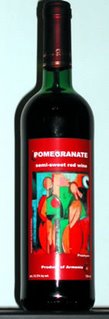
When shopping for wine, it does not have to be an intimidating experience. With all the different grape varietals, regions, and vintages (year the grapes were harvested), and different names for the same wines, no wonder wine shopping can be so hard.
I will do what I can to help make your shopping experience a little more enjoyable. Don't ever hesitate to ask me to come along if you're selecting wine for a dinner party, or just picking up a bottle to have around the house. I never turn down a wine shopping trip, I'm like a kid in a candy store! I might make you crazy though with how long I want to stay and look at everything.
Ok, so for those of us who enjoy a good bottle of French wine, this is the most confusing region to buy wine from, so let me make things a little easier by explaining some things. If you don't speak French (which I don't), it can be very difficult since all of their lables look VERY similar. Most wineries in France name their wines after the region that the grapes were grown in. For example, wines from the Bordeaux region of France are usually blends of up to five different grape varietals, most commonly though, Merlot, Cabernet Sauvignon, and Cabernet Franc. Wine from the Burgundy region of France are most commonly Pinot Noir.
 Something else that can be kind of confusing that people often ask me is "What is the difference between Shiraz and Syrah?" The only difference between Shiraz and Syrah is the region the grape is grown. In France, they call it Syrah, in Australia and most other regions they call it Shiraz.
Something else that can be kind of confusing that people often ask me is "What is the difference between Shiraz and Syrah?" The only difference between Shiraz and Syrah is the region the grape is grown. In France, they call it Syrah, in Australia and most other regions they call it Shiraz.Also keep in mind that the price tag on a wine is not always an accurate indicator of how good the wine is. I've found some great wine's in and around the $12 range per bottle like Castano's Monastrell, which I've blogged about at the bottom of this page.
If you pick up a bottle of wine, it sounds interesting, and the price is right, buy it. What's the worst that'll happen, you won't like it and you won't buy it again. When you order food in a restaurant, you're not gauranteed to like what you ordered, but you take a risk because it sounds good. Read the label on the back of the bottle, it will usually have a description of the wine and often they'll include food pairing suggestions.
HAPPY WINE SHOPPING!
Cheers,
Andrea




